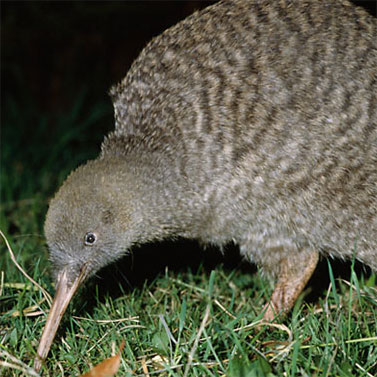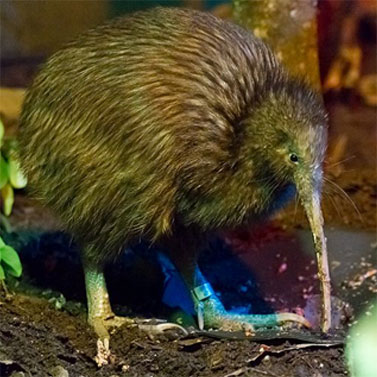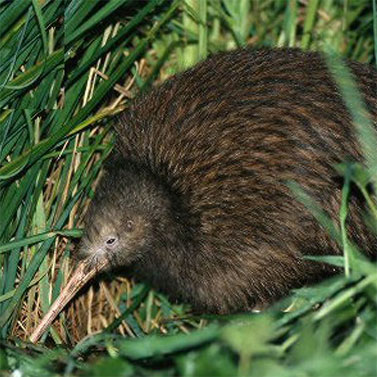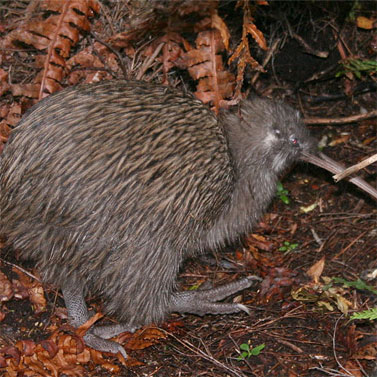Kiwis are an endemic species to New Zealand. That is, they are only found in New Zealand and their unusual shape and features is likely from the biological and geographic separation from their parent species.

Great Spotted
These kiwis live in tough subalpine conditions. They are found in north-west Nelson, the Paparoa Ranges and the Southern Alps between Arthur's Pass and Lake Sumner, and Little Barrier Island. In 2002 it was estimated that 17,000 remained.

Little Spotted
Little Spotted Kiwis eat grubs and other small insects that are found underground, and occasionally eat berries. Hence the sharp talons and long beak, it digs into the ground with its talons then shoves its long beak down the soft ground.

North Island Brown
Though Stewart Island brown kiwi emerge from their burrows to forage at dusk or on overcast days, the kiwi is a nocturnal bird. Kiwi, unlike other nocturnal birds, have poor vision — the eyes are small and the optic lobes of the brain very reduced.

Rowi
Otherwise known as Okarito Kiwi. The female can lay up to three eggs, each in a different nest. Both the male and the female incubate the eggs. The egg is very large, as it weighs 20% of the female's weight (as in all kiwis). Most pairs are monogamous throughout their lives.

Tokoeka
Otherwise known as the Souther Brown Kiwi. It has no preen gland, and its feathers have no aftershafts and no barbules. There are large vibrissae around its gape, and it has no tail, only a pygostyle. It has a length of 45–55 cm (18–22 in) and the female weighs 2.1–3.9 kg (4.6–8.6 lb) and the male weighs 1.6–2.8 kg (3.5–6.2 lb)